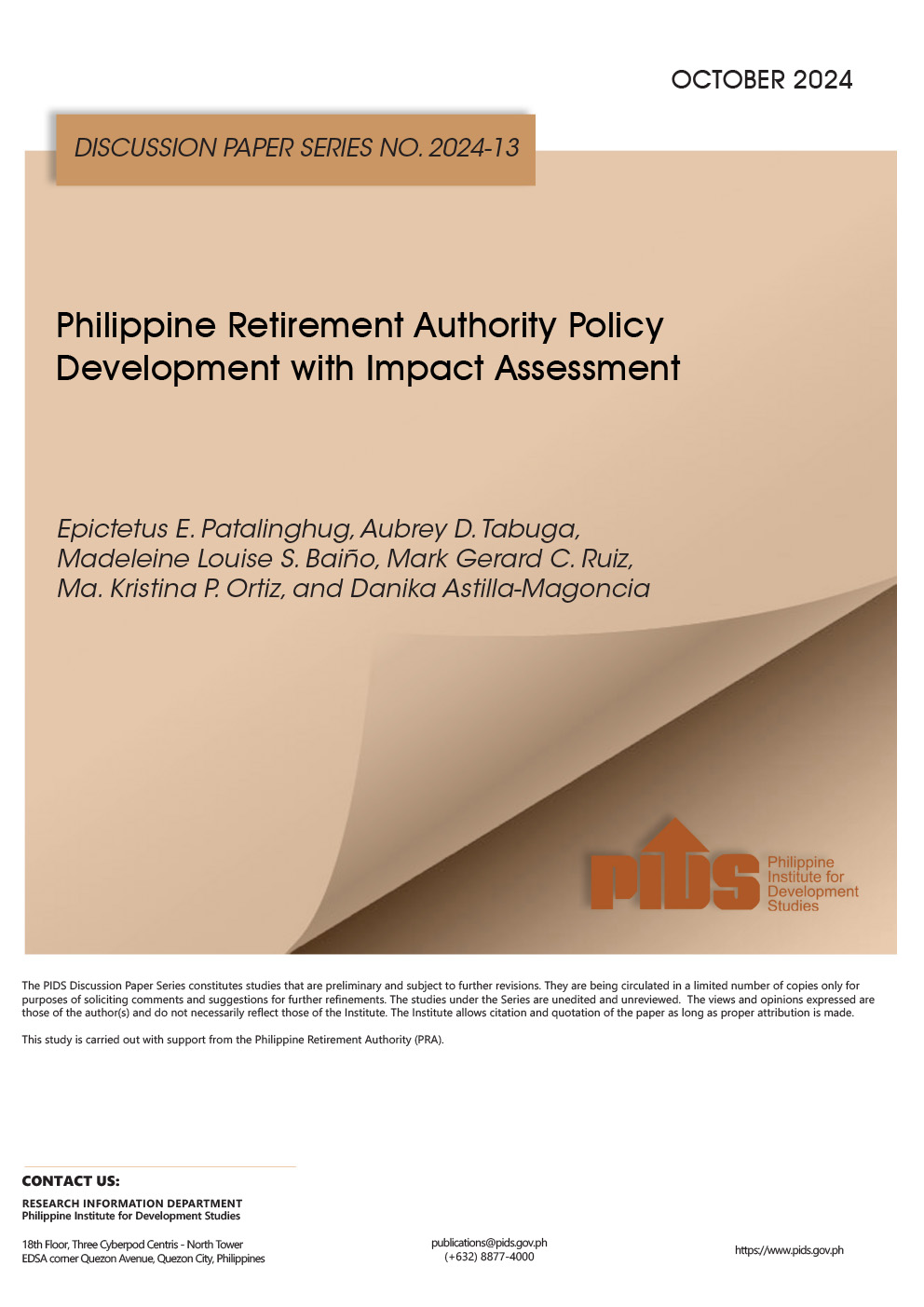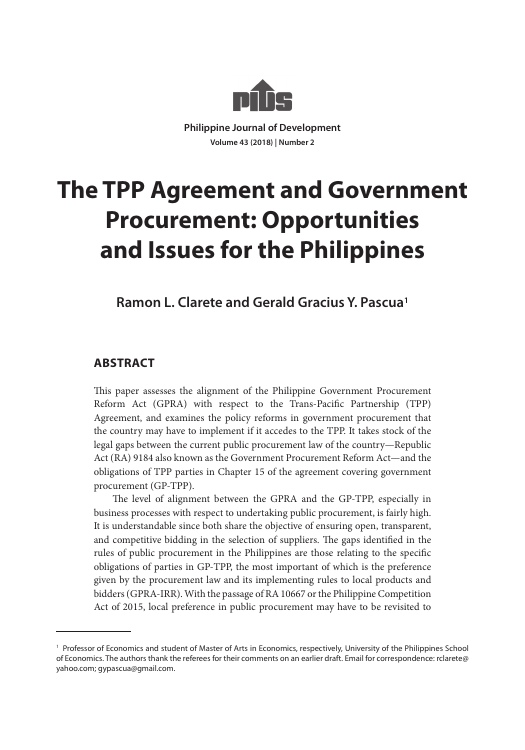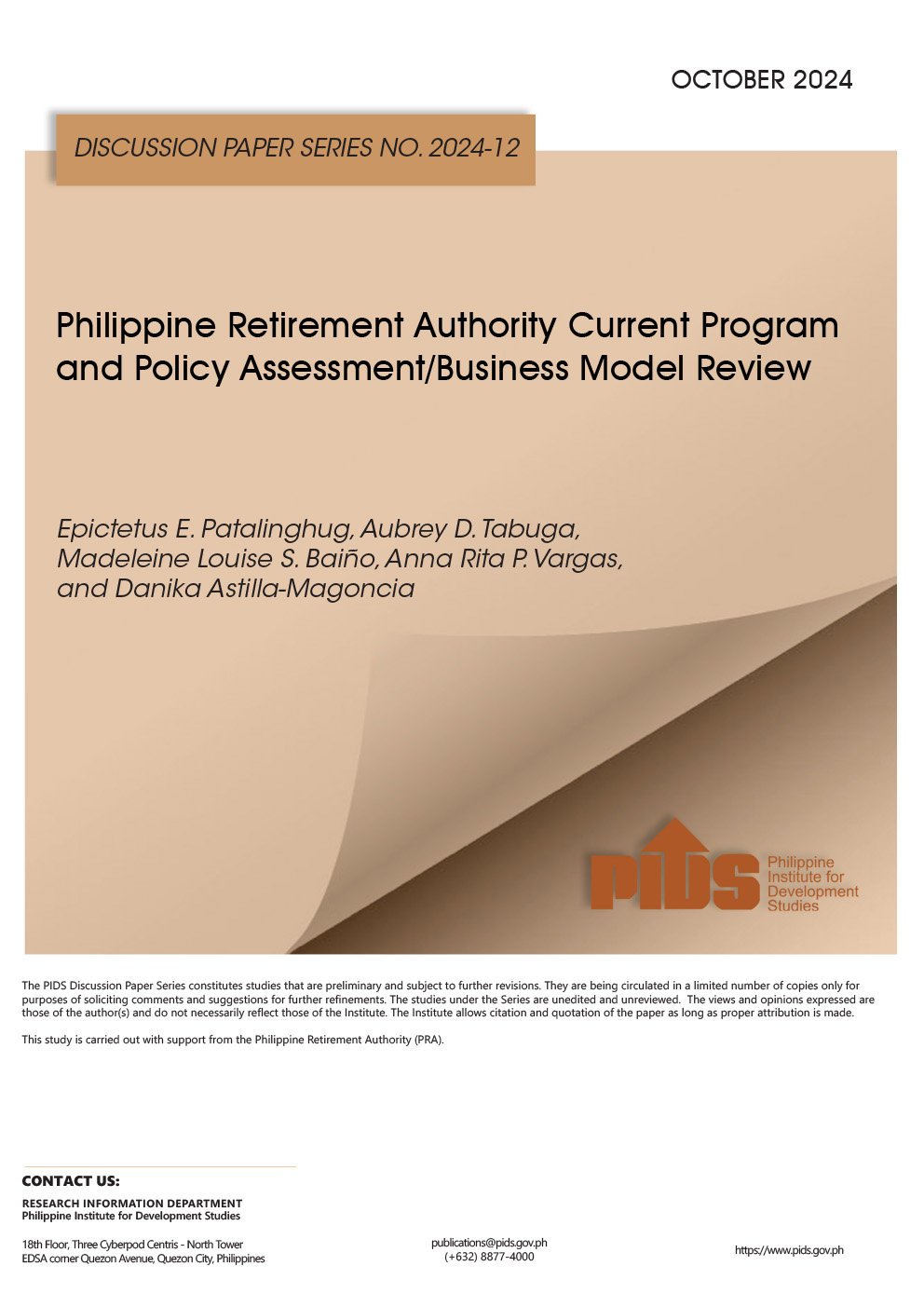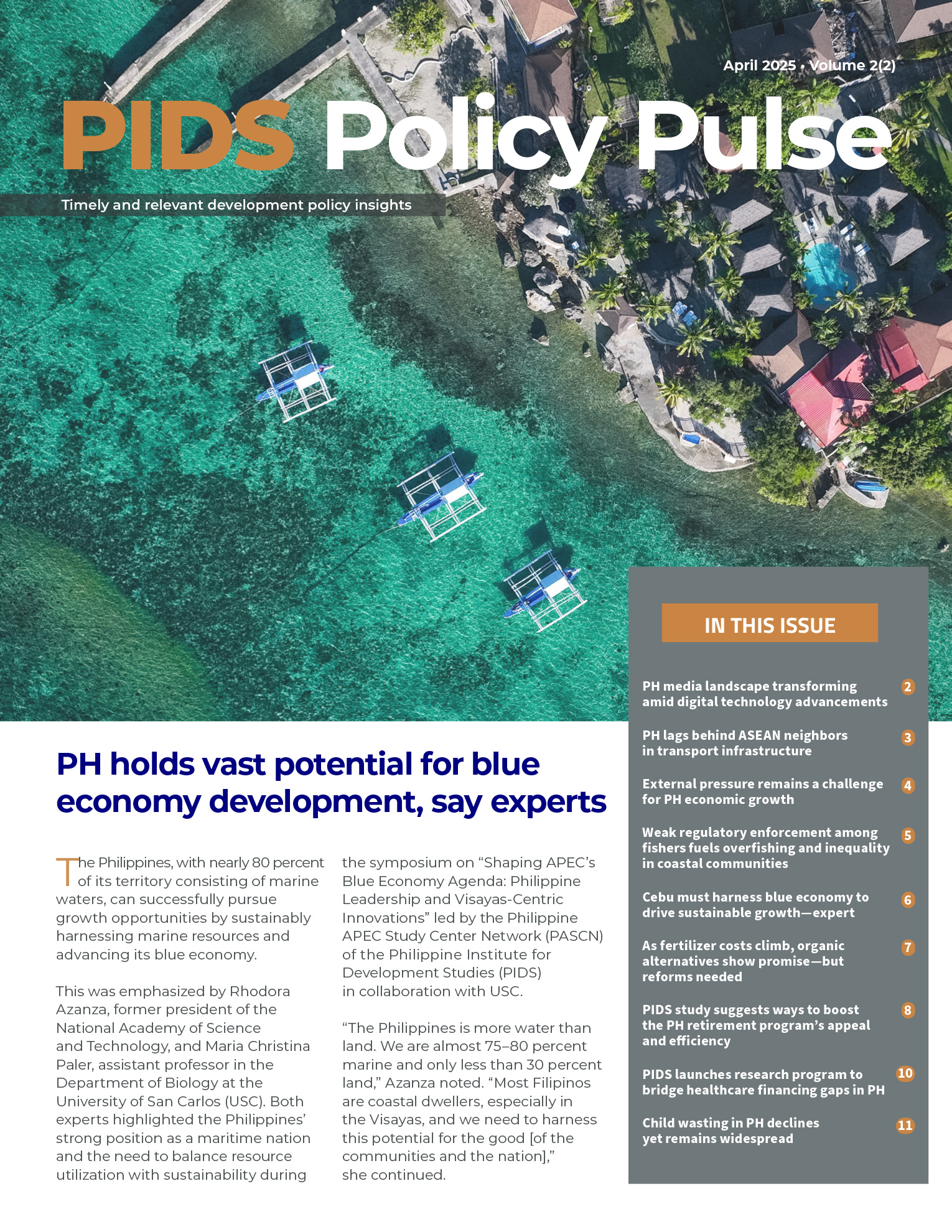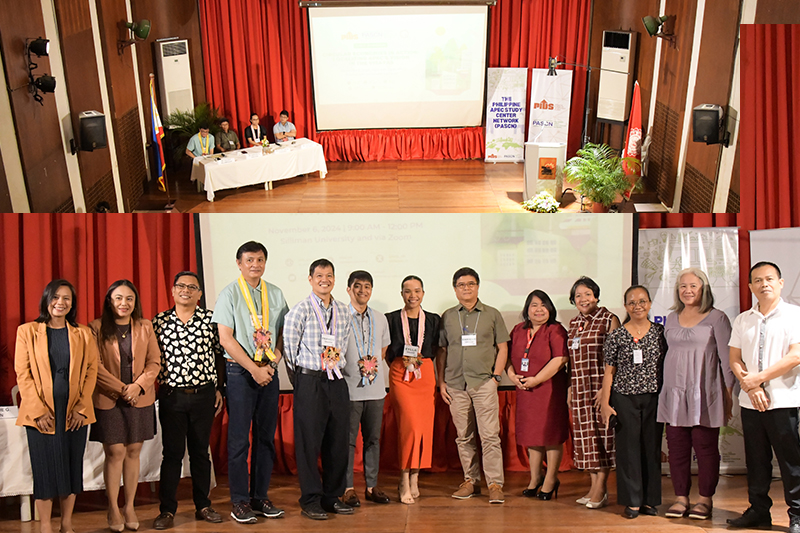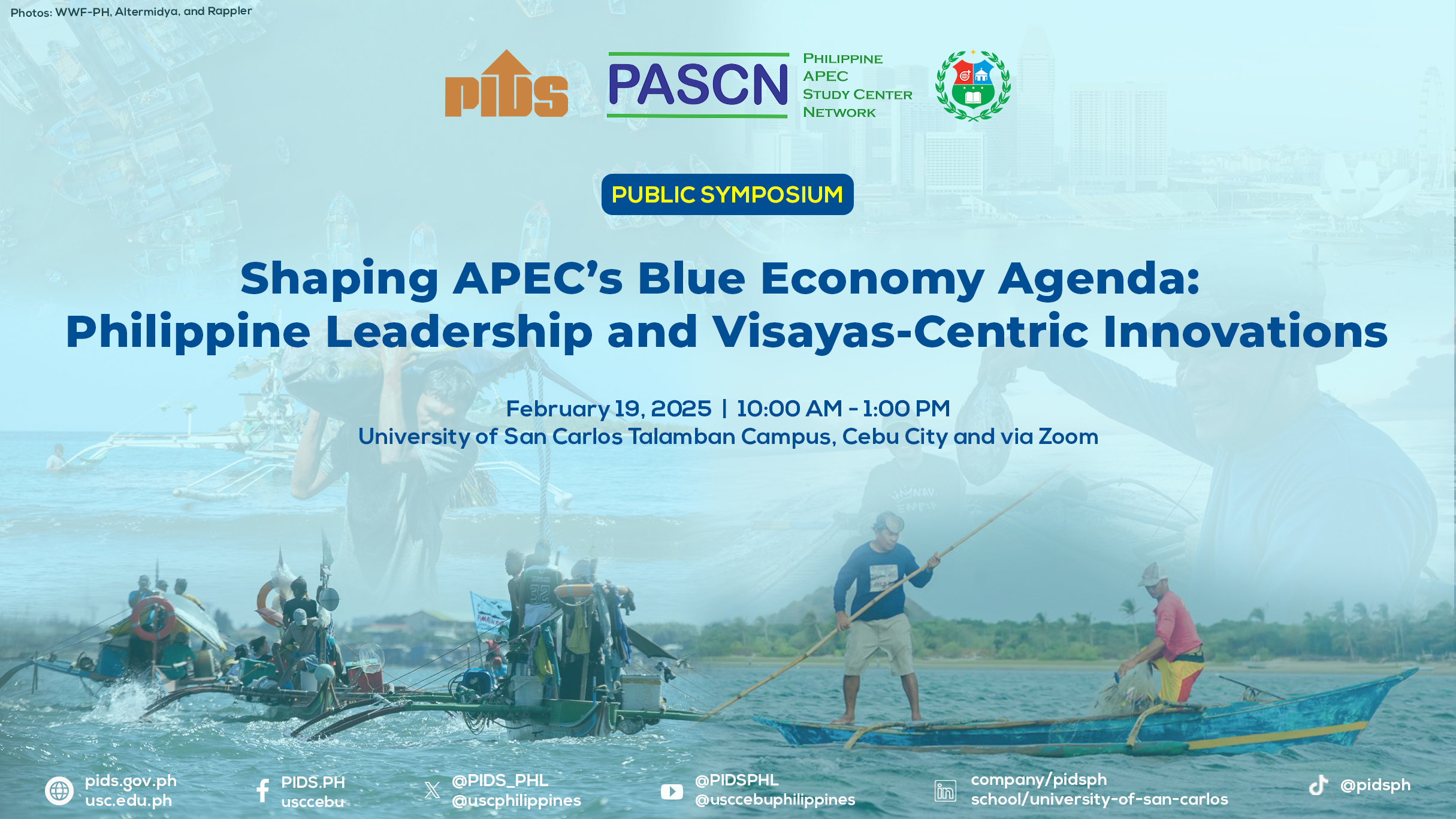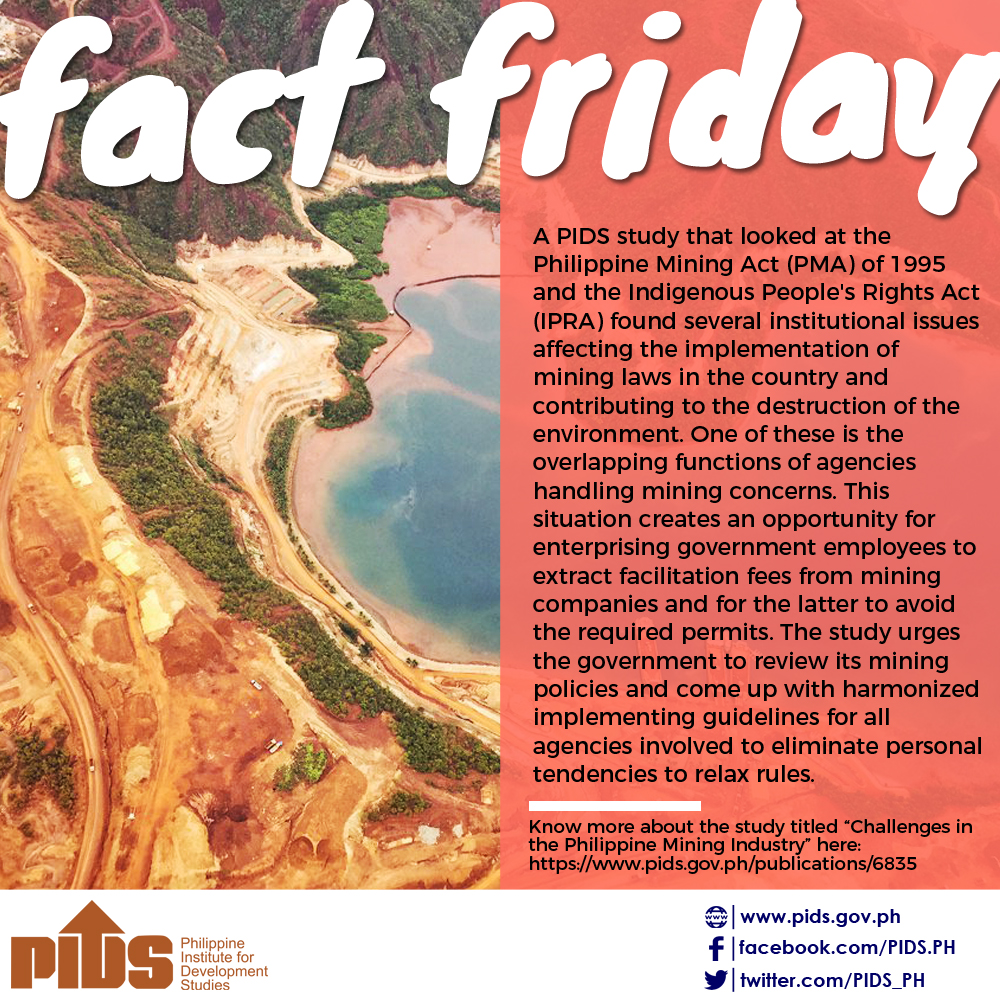This study's third phase evaluates the regulatory impact analysis (RIA) of policy recommendations aimed at enhancing the Philippine Retirement Authority's (PRA) retirement program, focusing on competitiveness and sustainability. Utilizing methodologies such as benefit-cost analysis, breakeven analysis, cost-effectiveness analysis, and regression analysis, the study compares targeting foreign retirees aged 40 and above with those aged 50 and above, assesses the cost-effectiveness of current PRA policies, and determines breakeven volumes.
Findings reveal that lowering the minimum retirement age to 35 (as a proxy for 40) improved the benefit-cost ratio compared to when the age requirement was 50. However, since 2017, the benefit-cost ratio for the 35+ program has declined due to rising costs outpacing benefits. Cost-effectiveness analysis shows a significant increase in cost-to-retiree ratios post-2017. Breakeven analysis indicates that the number of retirees required ranges from 652 to 759, with breakeven sales volumes between PHP 35 million and PHP 39 million, though these figures have escalated post-2017. Regression analysis identifies that consumer sentiment, exchange rates, and real estate expenditures positively impact foreign retiree volumes, with forecasts showing an upward trend, though lower than pre-pandemic levels.
The study concludes that the Philippine retirement industry remains economically viable and attractive. It suggests that PRA's competitiveness does not hinge on being a low-cost provider but rather on a targeted market strategy that builds customer loyalty. Embracing a younger retiree age requirement should be balanced with managing public perceptions and legislative concerns regarding program viability and social impacts.
Comments on this paper are welcome within 60 days from the date of posting. Email publications@pids.gov.ph.

